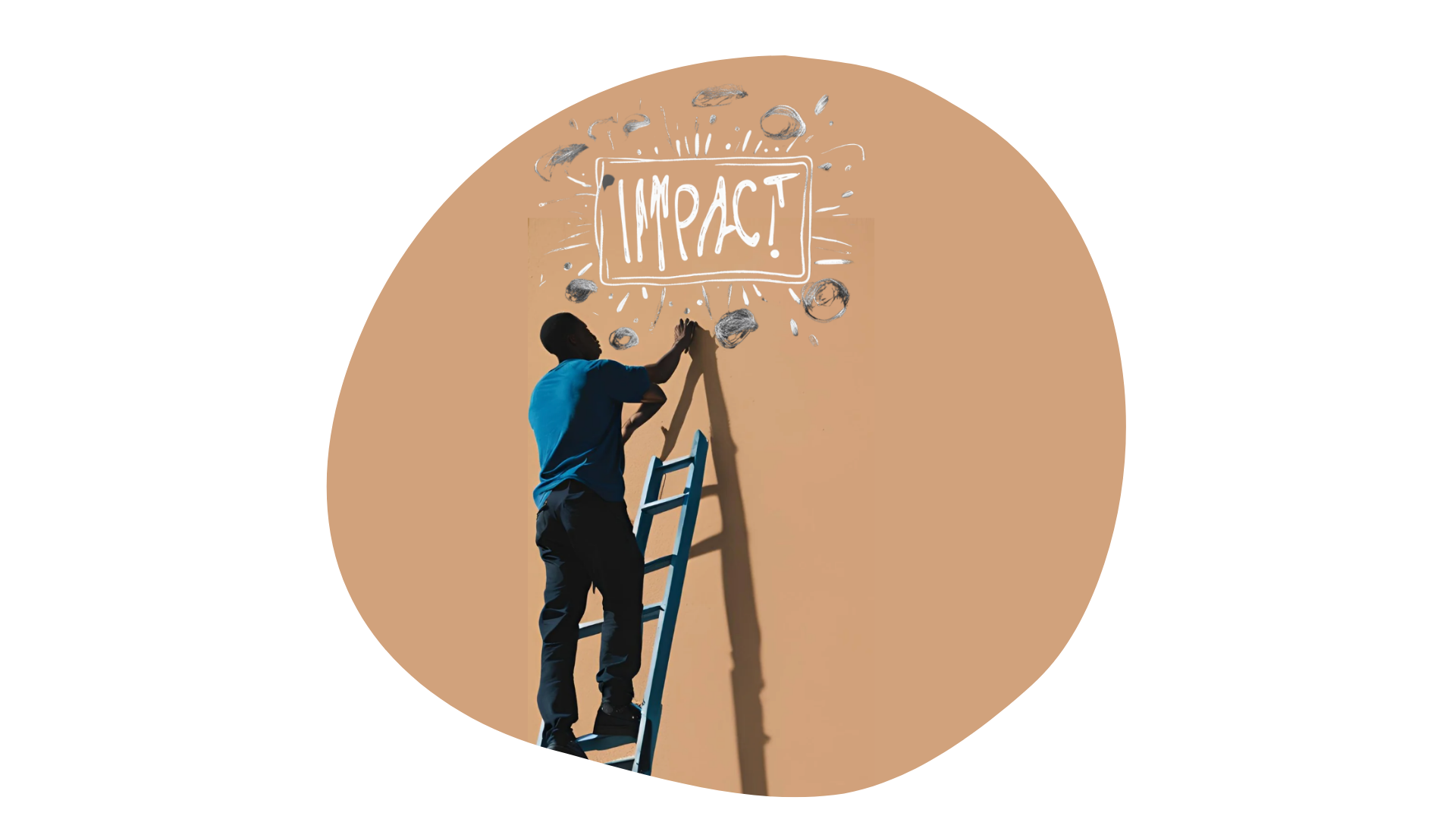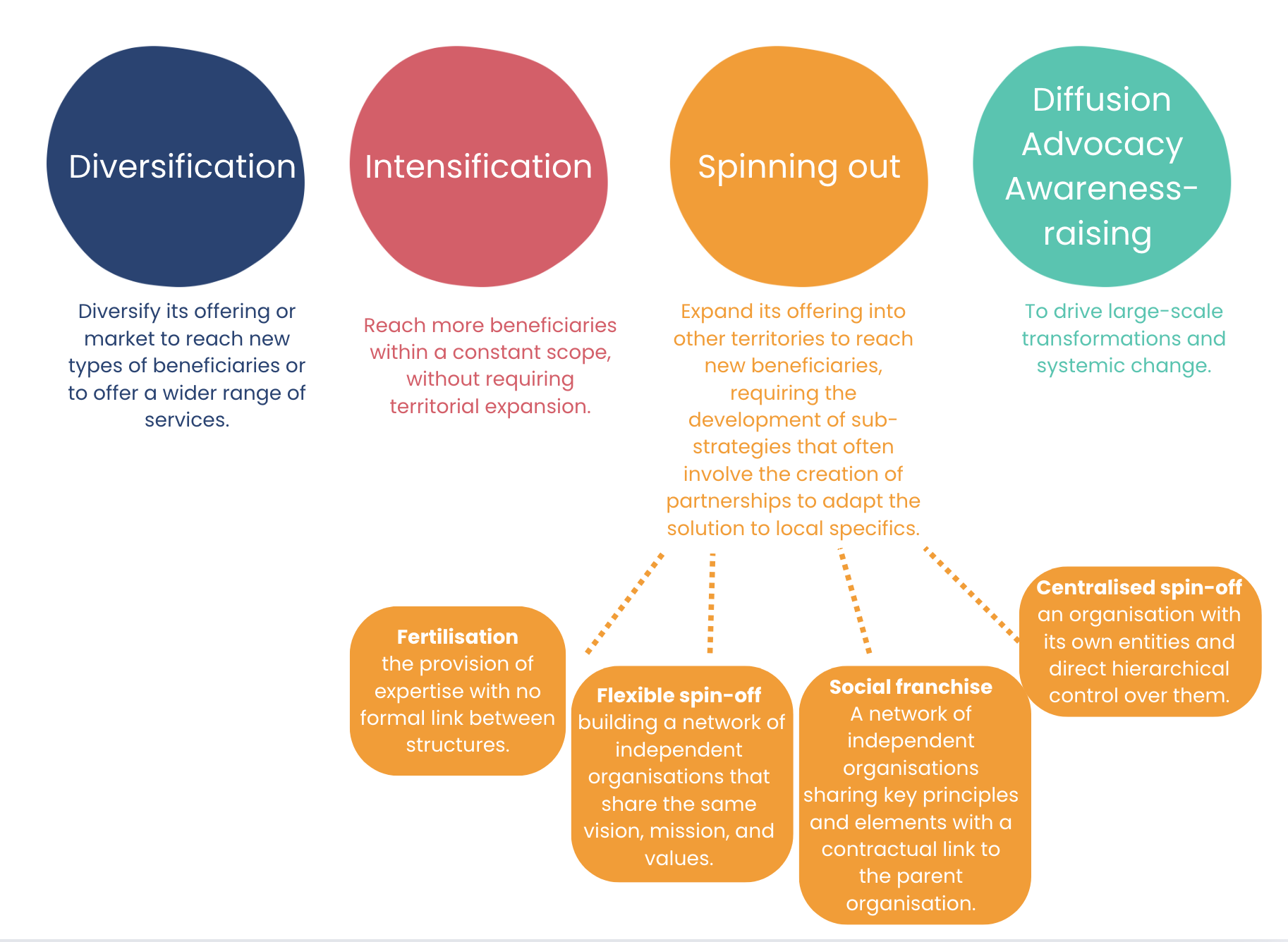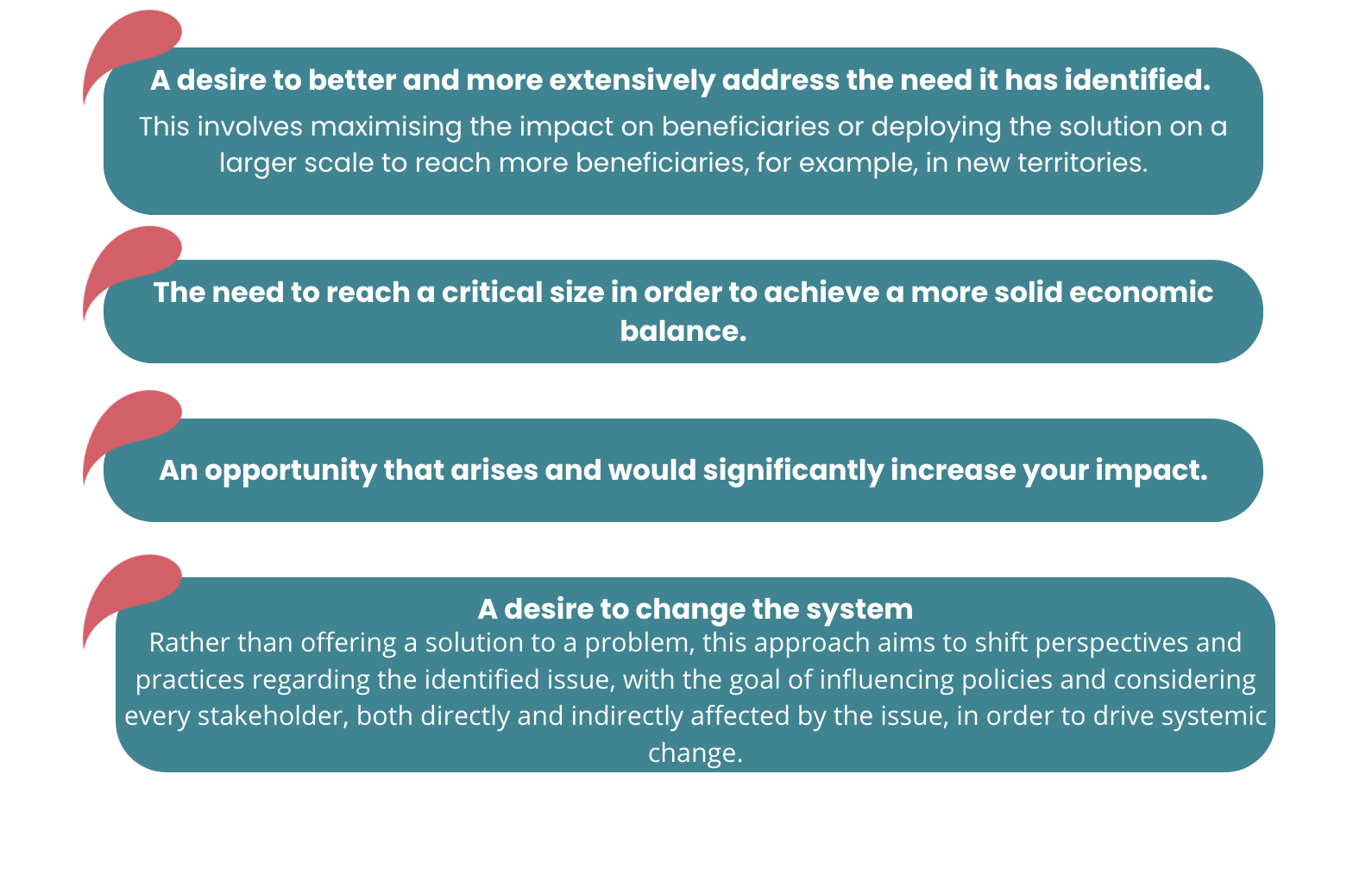Everything you need to know about scaling up

Scaling up, or how to increase social/environmental impact
Scaling up, refers to an organisation with social and environmental impact seeking to increase the reach of its impact. And yes, we cannot stress this enough: scaling up does not necessarily mean increasing the size of the organisation, but rather increasing the impact of its solution (reaching a larger number of beneficiaries, strengthening the impact on them, expanding into new territories, etc.).
When considering scaling up, it is crucial to take the time to revisit the origins of your organisation to reflect on the “Why”: that is, the problem you sought to address with this innovation, or in other words, the global change you hoped to achieve through this solution. Everything starts from there: an identified problem that you wish to address, with the goal of seeing that problem alleviated or even eradicated one day.
This is what we call the “End game,” referring to the role an organisation aims to play in the overall solution to a social problem, from which a wide variety of scaling strategies can emerge.
Designing the right scaling strategy cannot be done in isolation. It is crucial, from the outset, to identify all the stakeholders involved in addressing this social problem and to engage with them, or even collaborate, to generate significant impact for the beneficiaries. By doing so, the developed solution will be relevant, sustainable, complementary, and will fit into a broader framework for systemic impact.
This is why, when we support organisations with their scaling ambitions and challenges, we generally begin by working on the organisation’s theory of change to ensure that the vision, mission, and short, medium, and long-term ambitions are coherent and shared. We then analyse the maturity of the projects and organisations to assess the extent to which they have truly proven their concept – that is, their ability to generate impact – but also their model, meaning their capacity to sustain that impact within a fixed scope. This analysis helps identify any actions that may be needed to strengthen their model before implementing their scaling strategy.
Understanding scaling up
Multiplying the impact of a social innovation involves undertaking a strategic reflection on the means to be deployed in order to replicate, spread, or adapt a proven model on a larger scale. As mentioned earlier, this is not just about growing in size, but about multiplying the scope of the impact in an effective and sustainable way.
There are several reasons that may motivate an organisation to scale up:
These reasons ultimately all point towards the same goal: addressing a social issue through effective action to bring about a broader change within society
In any case, regardless of the motivation behind it, scaling up a high-impact solution must be approached with proper preparation, rigorous strategic planning, and continuous adaptation to the realities and challenges that arise.
Why? Simply because scaling up requires the mobilisation of significant resources (financial, but also and especially human).
The different scaling strategies
Scaling strategies are numerous, and several factors need to be considered to guide the choice towards one strategy over another. The most common scaling strategies are as follows:

All these scaling strategies can be carried out with other stakeholders through cooperation, mergers, coalitions, and alliances.
To go Further
👉 Want to know more or need support with scaling up? Contact us.
👉 Discover our special booklet on social franchising.
Date : 5 july 2024

